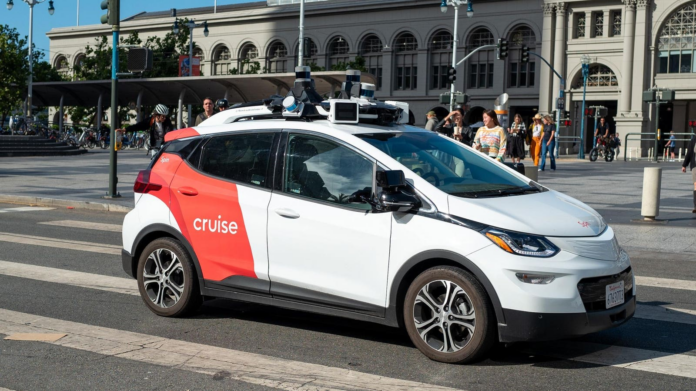Topline
Cruise—General Motors’ self-driving brand—will resume tests for its robotaxi service, the company announced Tuesday, months after Cruise suspended operations amid scrutiny of its driverless cars, which increased after Forbes reported a pedestrian was inadvertently dragged by one of the company’s vehicles.
General Motors’ self-driving brand recalled its robotaxi fleet last year after a company vehicle … [+] dragged a pedestrian after a crash. Gado via Getty Images
Key Facts
Cruise will test its robotaxi fleet with human-driven vehicles in Phoenix before resuming tests in other “select cities,” the company said. The vehicles will be used to create maps and gather road information without autonomous systems engaged, according to Cruise, including how vehicles react to intersections, construction zones and road signs. The robotaxi fleet will then apply that information to “other environments and scenarios,” which Cruise says is “much the same as a human driver learns, but with far more data” and “continuous learning” shared across the entire fleet. Before resuming public testing, Cruise said it conducted tests on the autonomous vehicles in “dynamic simulated environments” and on closed courses.
What To Watch For
Cruise will evaluate its autonomous vehicles without human drivers as part of its next testing phase, the company said. The vehicles—driving on public roads—will be accompanied by a “safety driver” behind the wheel who will monitor the vehicle and take over if needed.
Crucial Quote
Cruise spokesperson Sara Autio said the tests are a “critical step for validating our self-driving systems” that will “help inform where we ultimately will resume driverless operations.”
Key Background
Cruise suspended its driverless operations nationwide in October, days after California revoked the company’s permit statewide after determining its vehicles were “not safe for the public’s operation.” The decision follows Forbes’ reporting that a female pedestrian in San Francisco was dragged by a Cruise autonomous vehicle after a human-driven car pushed her in front of the robotaxi. Cruise said it would “take steps to rebuild public trust,” which the company noted could include “doing things that are uncomfortable or difficult.” Cruise subsequently recalled 950 vehicles from its robotaxi fleet to issue a software update to its “Collision Detection Subsystem,” which allows the robotaxis to detect crashes and pull over after a collision. Cruise CEO and co-founder Kyle Vogt resigned weeks later, while nine other executives and one-fourth of the company’s workforce were also laid off.
Further Reading
MORE FROM FORBES Judge Asks Cruise Why It ‘Misled’ Regulators Over October Crash
MORE FROM FORBES Cruise Recalls Robotaxi Fleet After Report Of Pedestrian Dragged By Vehicle




